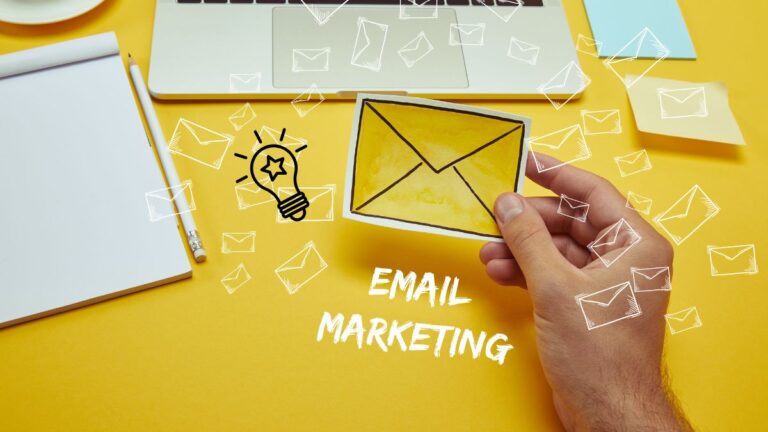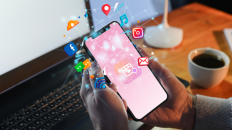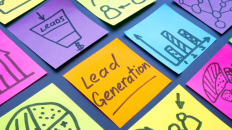Personalization has emerged as an essential component of success in the competitive and fast-paced environment of digital marketing today. Personalization of both the content as well as the tactics used in email marketing, in particular, is quite beneficial. Emails that have been personalized may result in increased open rates, levels of engagement, and conversion rates. In this article, we will discuss email customization strategies that are easy to implement yet very effective, with the goal of elevating the level of your marketing efforts.
1. Grouping for the Purpose of Directed Communication
The key to successful email personalization in email is segmentation of the recipient list. You should separate your audience into smaller groups depending on criteria such as their behavior, preferences, as well as demographics rather than delivering a single message that is general to your whole email list. This gives you the ability to tailor your communications to the unique concerns and interests of each individual group.
Key Categories for Market Segmentation:
- Age, gender, location, and work title are all also examples of demographic information.
- Purchasing history, time spent on websites, as well as level of participation in past email campaigns are all examples of behavior.
- Material interests, communication frequency, and also preferred material format are included in the list of preferences.
- E-commerce businesses, for instance, may segment their customer lists in order to provide individualized product suggestions to customers based on those customers’ previous purchase histories.
2. Content Blocks That Are Dynamic
Within the same email, you are able to present different material to various segments by using something called dynamic content blocks. Using this method, you may produce emails with a high level of personalization without having to establish individual email marketing campaigns for each section. The user’s data, their behavior, or any number of other factors might serve as the basis for dynamic content.
Some examples of dynamic content are as follows:
- Displaying items that are relevant to the recipient’s previous purchases or browsing history is an example of a product recommendation.
- Displaying unique offers or events in accordance with the recipient’s location is an example of location-based content.
- Triggers of Behavioural Change: Send follow-up emails depending on the actions made (for example, reminders for shopping carts that have been abandoned).
- By ensuring that each recipient sees material that is relevant to them, dynamic content increases the likelihood that the receiver will interact with the content and convert.
3. Customized headings for e-mail subject lines
Personalizing the subject line is the first thing that recipients see. This has a substantial influence on the percentage of emails that are opened. It is possible to get the recipient’s attention and increase the likelihood that they will open the email by include the recipient’s name or making a reference to the recipient’s prior activities in the subject line.
Personalized subject lines examples include the following:
“Hey there, [Name], ” Check Out This Special Deal That We’ve Created Just for You!
“You were greatly missed, [Name]!” Please take this coupon for 10% off your next purchase. “
Keep in mind that the usage of email personalisation in subject lines. You should also do it with caution. This will prevent coming out as too robotic or generic.
4. Automated Behavior and the Use of Behavioral Triggers
Sending automatic emails in response to certain activities or inactions taken by your subscribers is an example of behavioral triggers. This degree of customization guarantees that your communications are sent at the appropriate moment and are relevant to the actions of the receiver.
Emails That Often Trigger Unwanted Behavior:
Send consumers who have abandoned their carts emails that provide a list of the things they have left in their cart as well as an incentive to finish their transaction.
Sending tailored Welcome Messages to New Subscribers: You should send tailored welcome messages to new subscribers, and also possibly including a special offer.
Product Recommendations: Recommend goods to the recipient based on their previous purchases or browsing activity on your website.
Emails that make use of behavioral triggers are very successful because they capitalize on the recipient’s current activities and interests.
5. Recommendations Tailored to the Individual
It is possible to include recommendation engines into your email marketing approach, similar to ones that are used by industry leaders in e-commerce such as Amazon and Netflix. These engines examine the recipient’s past actions and preferences in order to provide recommendations on items or material that they would find interesting.
The following are some examples of personalized recommendations:
“On the basis of your recent purchases, it is possible that you will enjoy these goods.”
“Take a Look at What’s New and Popular in Your Favorite Categories Right Here!”
Not only can personalized suggestions improve the quality of the user experience, but they also increase the likelihood that you will be able to make appropriate cross-sell or upsell offers.
6. Personalization determined upon the user’s location
Email content may be personalized depending on the recipient’s geographic location using a technique known as location-based personalisation. This strategy may be especially useful for companies that have a physical presence, such as those who operate shops made of brick and mortar or event venues.
Several Different Ways to Put Location-Based Personalization to Use:
- Send event invites or promotional materials to recipients depending on how close they are to your establishment.
- Bring attention to the locations of local stores as well as the hours they are open.
- Personalize material or offers pertaining to the weather depending on the location of the receiver.
- You may enhance engagement as well as conversions by demonstrating to recipients that you understand the location-specific demands of their organization.
7. Make the Most of Your Client Information
Email Personalization is very effective; yet, it is necessary to handle client data in an ethical and responsible manner. Be upfront about how you utilize client information and ensure that privacy and data protection standards are adhered to at all times. In addition, you should always provide recipients the choice to decline receiving customized emails if that is something they want.
8. Testing with A and B
A/B testing entails sending out two different versions of an email to a portion of your readership in order to compare their respective levels of success. You may experiment with several aspects of personalisation by making use of A/B testing. Some examples of these aspects include subject lines, content, graphics, and call-to-action buttons.
Testing with A and B: Some Helpful Hints
Conduct tests on a single component at a time to determine the extent to which it affects performance.
If you want reliable findings, you should choose a sample size that is statistically significant.
Your email marketing efforts should be continuously iterated and improved depending on the outcomes of A/B tests.
The use of A/B testing guarantees that your attempts to personalize your website are driven by data and that they are always being improved.
9. Content Produced by Users (also Known as UGC)
Email Personalization may be achieved to a great extent by using user-generated material in the form of reviews, testimonials, and customer tales, for example. Incorporating user-generated content (UGC) into your emails not only lends a sense of authenticity to the messages, but it also highlights the perspectives and activities of actual consumers.
Different Ways to Make Use of UGC:
- Include evaluations or testimonials from other customers that are relevant to the recipient’s interests or previous purchases.
- Put the spotlight on pictures and videos taken by customers using your goods or services.
- Encourage your consumers to talk about their experiences and share their tales with you so that you may include them in your emails.
- By highlighting the real-life experiences of your clients, user-generated content (UGC) lends authenticity to your communications while also making your emails more personable.
10. Tailored and Personalized Post-Acquisition Follow-Ups
Don’t allow the connection with a consumer fizzle out after they’ve made a transaction from you. Create a tailored email follow-up series for customers after they have made a purchase. Demonstrate your gratitude for the customer, solicit their opinion, and provide product or service recommendations based on their most recent purchase.
Examples of Personalization Applied After the Purchase:
“Thank You Very Much, [Your Name]! How are you finding the experience of using your new [Product]?
“Clients Who Purchased [Product] Also Enjoyed [Related Product].”
These emails show that you appreciate your clients and are devoted to ensuring that they are happy with the service they get from you.
Email Personalization: The final word
In the current context of digital marketing, the ability to personalize emails is a game-changer. You can generate email marketing campaigns that are more successful, engaging, and relevant by putting into practice several strategies that are both easy and powerful. Keep in mind that the process of customization is a continual one that calls for continuing refining and adaptation to the ever-changing requirements and preferences of your audience. Your email marketing efforts have the potential to produce better levels of engagement, conversion rates, and long-term client loyalty if you use the appropriate personalisation technique.





